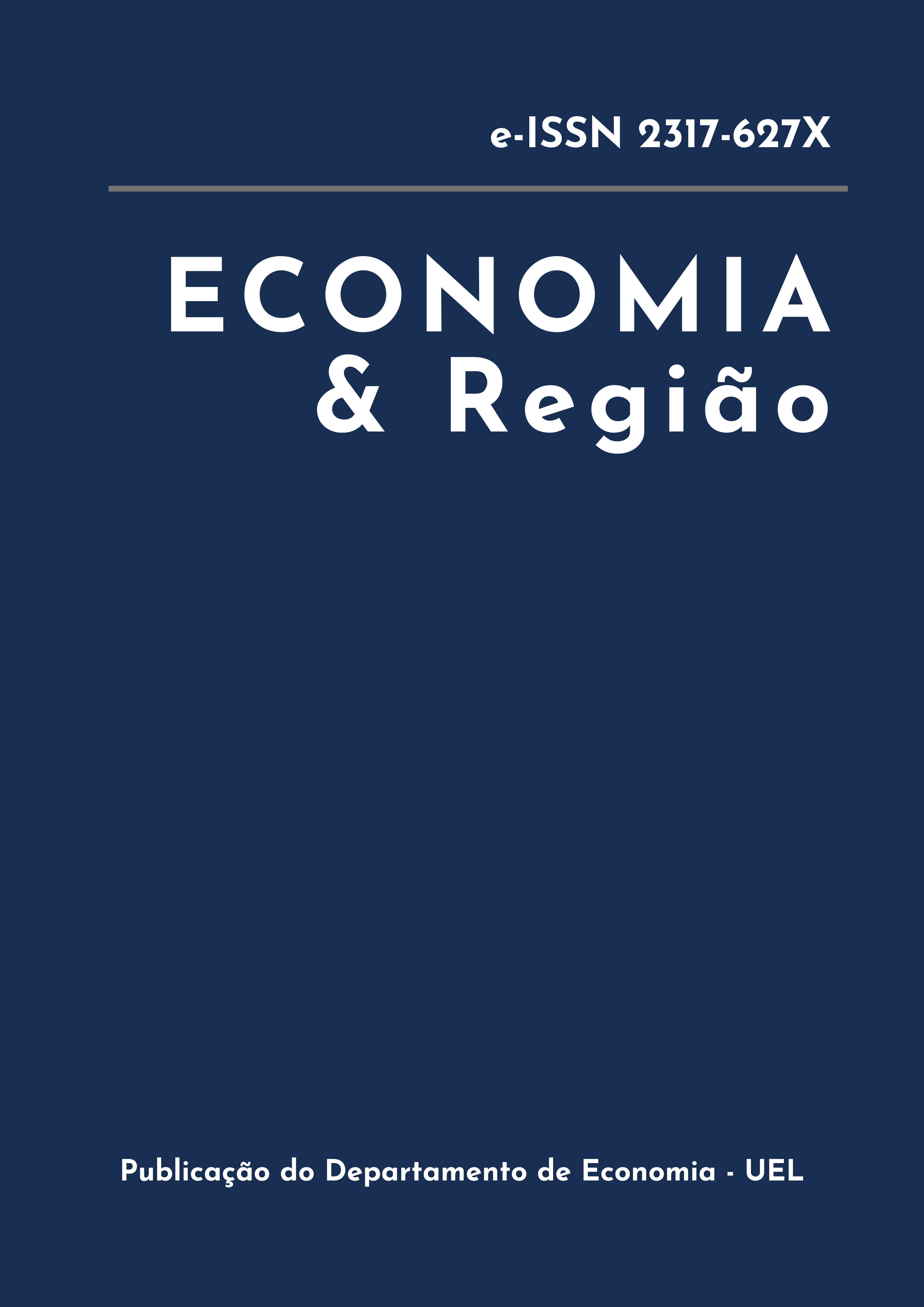Commuting and means of transportation an analysis of population groups in the Federal District
an analysis of population groups in the Federal District
DOI:
https://doi.org/10.5433/2317-627X.2024.v12.n1.48469Keywords:
comutation, logistic model, Distrito Federal, complex sample data, means of transportationAbstract
This study aims to analyze the population groups that commute to work in the 33 Administrative Regions (ARs) of the Federal District in Brazil, highlighting the means of transportation used. The data from the 2021 District Sample Household Survey (Pesquisa Distrital por Amostra de Domicílios - PDAD) were used to map the locations with the highest influx and outflow of workers and identify the main commuting flows between ARs. In addition, logistic models were employed to estimate the propensity to use different modes of transportation according to population characteristics, calculating odds ratios to better understand the characteristics of people who commute to work. The results revealed that over 1.2 million employed individuals commuted in 2021, with the majority commuting to other ARs. The Plano Piloto was the main destination, accounting for approximately 514,000 commutes, representing 41.6% of workers. Taguatinga also stood out, with approximately 143,000 commutes. There were significant differences between the origin and destination of the commutes, with the Plano Piloto attracting more people than it sent. This AR attracts workers with higher incomes, higher educational levels, and a lower proportion of black individuals. The analysis also showed that different modes of transportation are associated with different socioeconomic profiles.
Downloads
References
ALBIERI, S. Apresentação da precisão de estimativas nas tabelas de pesquisas por amostragem do IBGE. Rio de Janeiro, jul. 1999.
CODEPLAN - COMPANHIA DE PLANEJAMENTO DO DISTRITO FEDERAL. Pesquisa Distrital por Amostra de Domicílios - PDAD 2021: Manual do Entrevistador. Brasília, 2021.
DETRAN-DF - Departamento de Trânsito do Distrito Federal.. Estatísticas do Trânsito. 2022. Disponível em: < http://www.detran.df.gov.br/dados-mensais/. Acesso em: 9 abr. 2023.
HARVEY, D. Cidades rebeldes. São Paulo, Martins Fontes.2014.
IBGE. Arranjos populacionais e concentração urbana do Brasil. Rio de Janeiro, 2015.
IPEDF – INSTITUTO DE PESQUISA E ESTATÍSTICA DO DISTRITO FEDERAL. Pesquisa Distrital por Amostra de Domicílios (PDAD) 2021: relatórios de resultados. 2023. Disponível em: https://www.ipe.df.gov.br/pdad-2021-3/. Acesso em: 9 abr. 2023.
LEES, L.; SLATER, T.; WYLY, E.. Gentrification. Routledge, 2007.
LEVY, C. Travel Choice Reframed: “Deep distribution” and gender in urban transport. Environment and Urbanization, v. 25, n. 1, p. 47-63, 2013. DOI: https://doi.org/10.1177/0956247813477810
LIMA, L. S.; LOUREIRO, C. F. G.; SOUSA, F. F. L. M.; LOPES, A. S. Espraiamento urbano e seus impactos nas desigualdades socioespaciais da acessibilidade ao trabalho em Fortaleza. Transportes, Anpet-Associação Nacional de Ensino e Pesquisa em Transportes, v. 29, n. 1, 2021. DOI: https://doi.org/10.14295/transportes.v29i1.2348
MARICATO, E. Para entender a crise urbana. São Paulo, Expressão Popular, 2015.
MOURA, R.; BRANCO, M. L. G. C.; FIRKOWSKI, O. L. C. DE F. Movimen¬to pendular e perspectivas de pesquisa em aglomerados urbanos. São Paulo em Perspectiva: SEADE, v. 19, n. 4, p. 121-133, 2005. DOI: https://doi.org/10.1590/S0102-88392005000400008
MOURA, R.; DELGADO. P.; COSTA, M. Movimento pendular e políticas públi-cas: algumas possibilidades inspiradas numa tipologia dos municípios brasileiros. In: BOUERI, R.; COSTA, M. C. (Eds.). Brasil em desenvolvimento 2013: estado, planejamento e políticas públicas. Brasília: Ipea, cap. 22, p. 665-696, 2013.
OJIMA, R., JR., E. M., PEREIRA, R. H. M., & SILVA, R. B. DA. O estigma de morar longe da cidade: repensando o consenso sobre as “cidades-dormitório” no Brasil. Cadernos metrópole, São Paulo, v. 12, n. 24, p. 395-415, 2010.
PEREIRA, R. H. M.; SCHWANEN, T.. Tempo de deslocamento casa-trabalho no Brasil (1992-2009): diferenças entre regiões metropolitanas, níveis de renda e sexo. Brasília: Instituto de Pesquisa Econômica Aplicada (Ipea), 2013. (Texto para Discussão, 1813).
PESSOA, D. G. C.; SILVA, P. L. N. Análise de Dados Amostrais Complexos. 2018. Disponível em: < https://djalmapessoa.github.io/adac/index.html. Acesso em: 9 abr. 2023.
PLAUT, P. O. Non-Motorized Commuting in the US. Transportation Research Part D: Transport and Environment, v. 10, n. 5, p. 347-356. 2005. DOI: https://doi.org/10.1016/j.trd.2005.04.002
RODRÍGUEZ, J. V. Movilidad cotidiana, desigualdad social y segregación residencial en cuatro metrópolis de América Latina. Revista Eure, v. 34, n. 103, p. 49-71, 2008. DOI: https://doi.org/10.4067/S0250-71612008000300003
URIARTE, A. M. L.. Estrutura Urbana e Viagens a Pé. Dissertação (Mestrado) — Universidade Federal do Rio Grande do Sul, 2012.
YOUNG, C. E. F.; AGUIAR, C.; POSSAS, E.. Sinal fechado: custo econômico do tempo de deslocamento para o trabalho na região metropolitana do rio de janeiro. Revista Econômica, v. 15, n. 2, 2013. DOI: https://doi.org/10.22409/economica.15i2.p70
Downloads
Published
How to Cite
Issue
Section
License
Copyright (c) 2023 Caio César Soares Gonçalves

This work is licensed under a Creative Commons Attribution 4.0 International License.
Economia & Região adota a Licença Creative Commons Attribution CC-BY 4.0 International, portanto, os direitos autorais relativos aos artigos publicados são do(s) autor(es), que cedem à Revista Economia & Região o direito de exclusividade de primeira publicação.
Sob essa licença é possível: Compartilhar - copiar e redistribuir o material em qualquer suporte ou formato. Adaptar - remixar, transformar, e criar a partir do material, atribuindo o devido crédito e prover um link para a licença e indicar se mudanças foram feitas.














